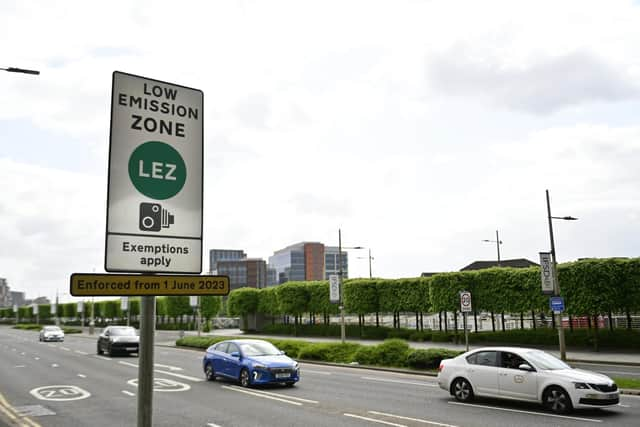LEZ Glasgow: Academic says 'no safe level of air pollution' as court verdict pending
Opponents of the LEZ are have recently claimed the measure is unnecessary, due to readings showing that air pollution in the city has recently dropped.
Arguments were made in court this week amid a legal challenge against the LEZ that council chiefs had no proper legal justification to allow a “illegal” and “draconian” scheme to operate in Scotland’s largest city.
Advertisement
Hide AdAdvertisement
Hide AdDr Heather Price, a senior lecturer of biological and environmental sciences at the University of Stirling, said air pollution “changes constantly over space and time – year-on-year, month-by-month, and all the way down to second-by-second”.“It’s very dynamic, depending on how much air pollution is being produced, moved and removed from the atmosphere,” she said.


“This makes direct before/after LEZ comparisons very challenging, and there is a need to consider the wider factors [such as] weather [and] long-term impacts of Covid lockdowns rather than just looking at the air quality data alone, since this doesn’t tell you the full story.
“The key point is that there is no safe level of air pollution, and so we need to do everything we can to improve air quality as much as possible. The World Health Organisation have recently updated their air quality guidelines to reflect that air pollution can cause harm even at very low levels.”
According to Dr Price, air pollution is a complex mixture of particles and gases which are harmful to health. The most important pollutants from vehicles, from a health perspective, include nitrogen dioxide (NO2) and particulate matter (PM2.5).
NO2 is a gas that is formed through combustion processes and can irritate the airways and cause those with existing health conditions, such as asthma, to experience a worsening of symptoms, while PM2.5 – particulate matter with a diameter below 2.5 μm – comes from lots of different sources, including traffic.
PM2.5 is so small it can be breathed in and can then get transported around the body. It can particularly affect those more vulnerable to air pollution, such as those with pre-existing health conditions, young people, older people and pregnant people.
Dr Price said: “If we think of solving air pollution as a big puzzle, LEZs are certainly one of the puzzle pieces that can help.
“It’s also important to note that LEZs are not the only strategy being used in Glasgow to try and improve air quality. LEZs are generally used as one of a number of complementary measures that can be used to improve air quality and, consequently, people’s health.”
Advertisement
Hide AdAdvertisement
Hide AdA spokesperson for Glasgow City Council said: “Glasgow’s LEZ was introduced to protect public health by tackling long-standing breaches of the air quality objectives in the city centre.
“The extensive work that went into the decision to introduce the LEZ was set out during the recent court hearing and, as stated at court, the council is of the view that we correctly assessed available air quality data and used appropriate modelling when taking the decision to implement the second phase of the scheme.
“Our views are now known to the court and it would be inappropriate to make further comment while the court is considering its decision.”
A verdict will be delivered on the court case outcome over coming weeks.
Comments
Want to join the conversation? Please or to comment on this article.